Trashformation: Contemporary Eco-Art
Quigley Gallery, Western Colorado University, 2020
January 1, 2021
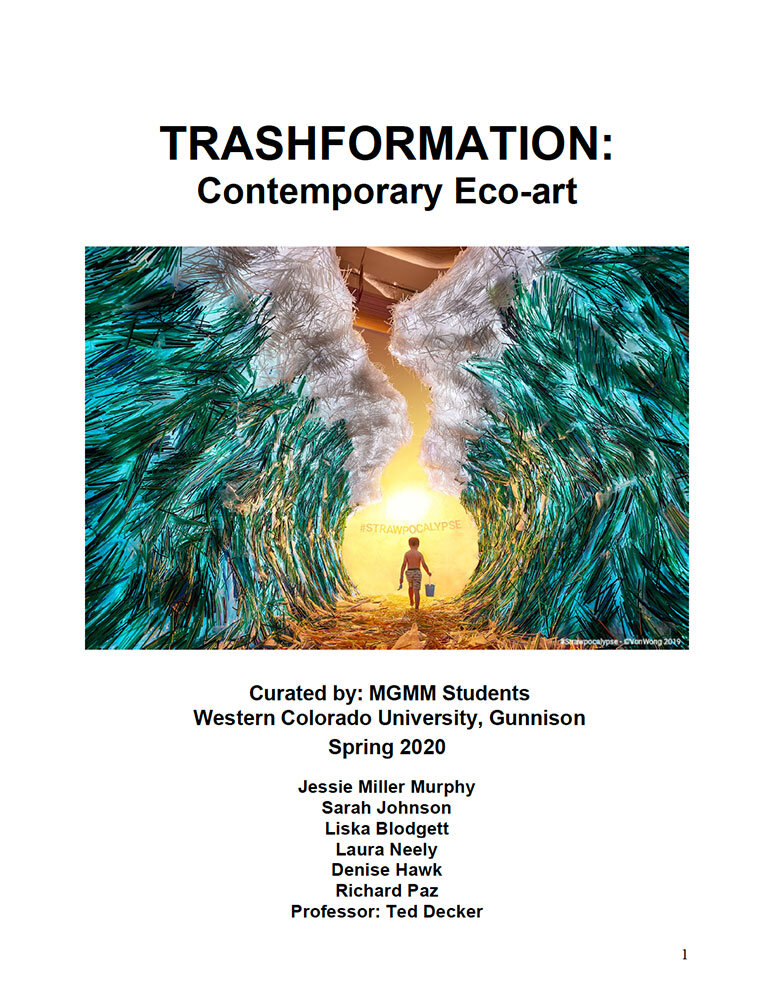
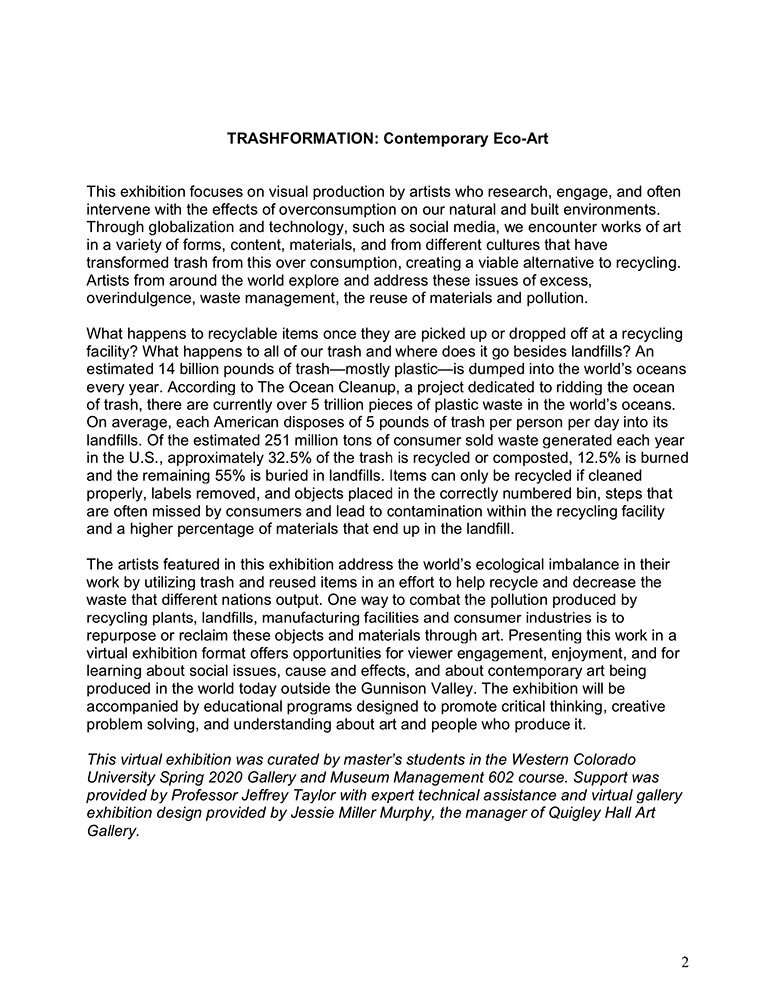
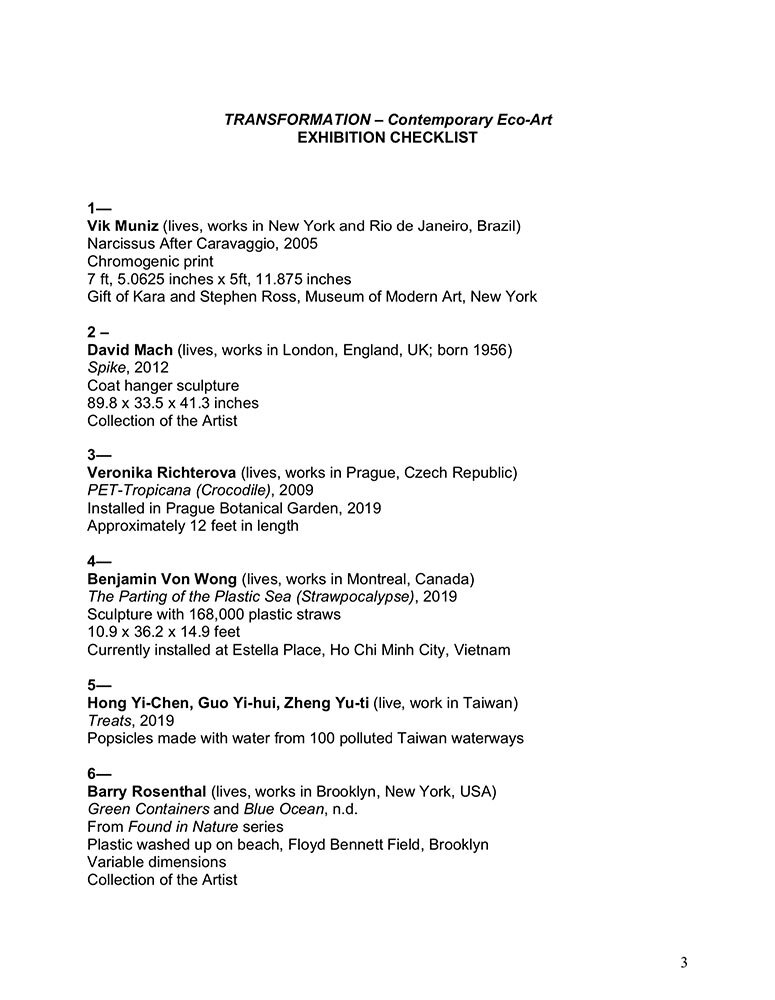
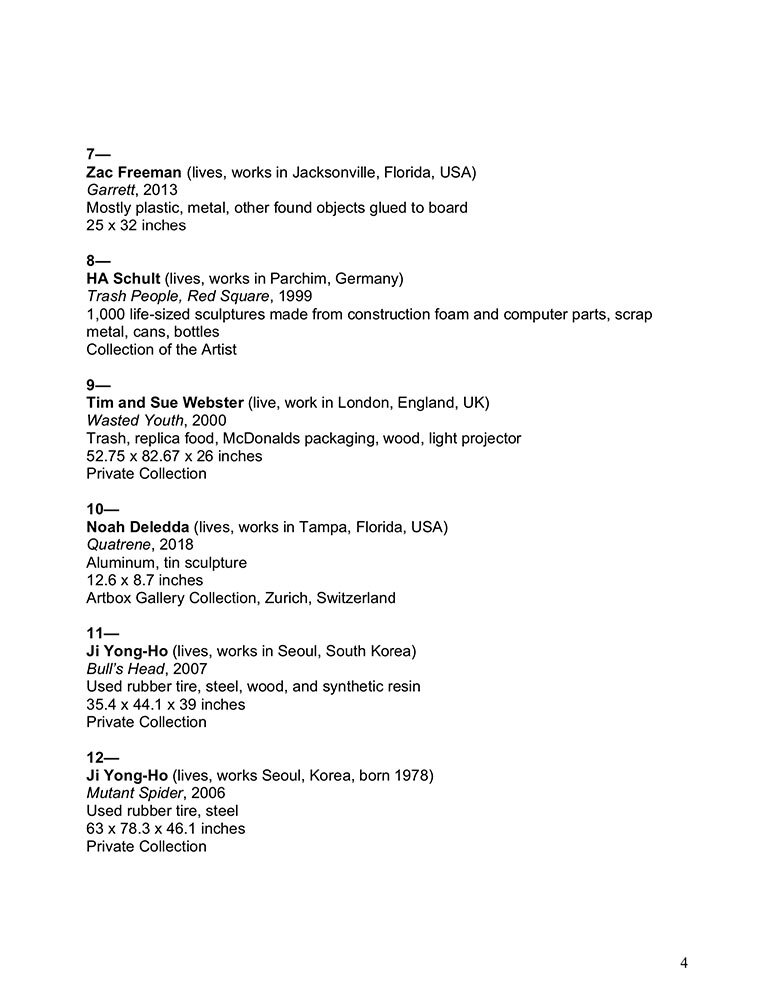
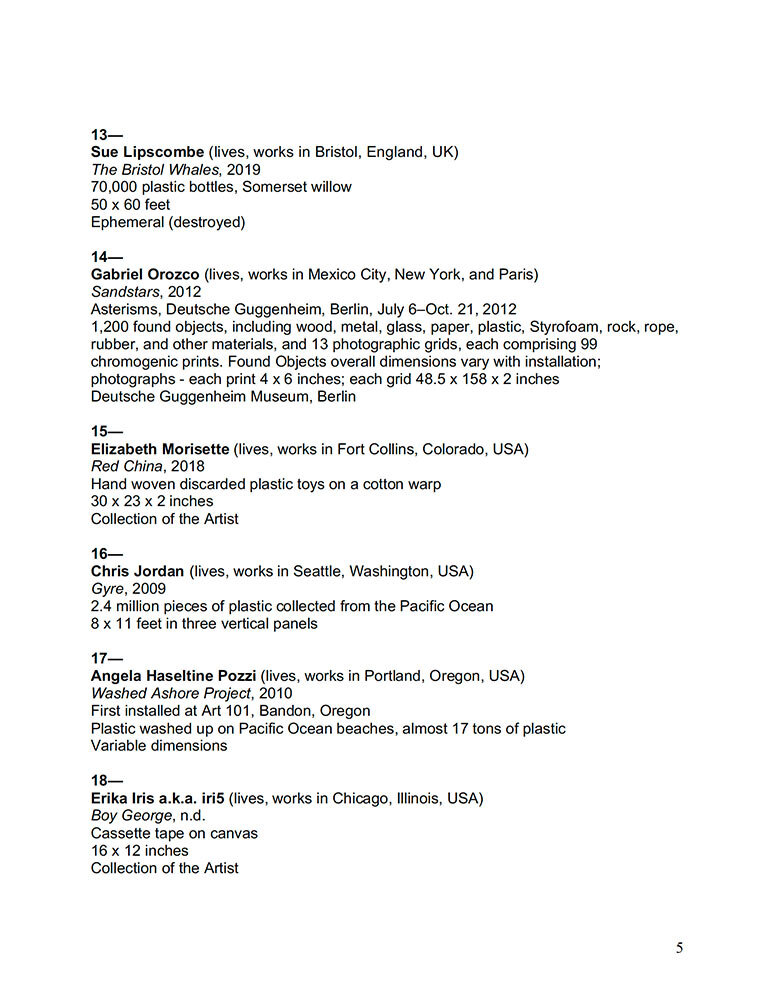
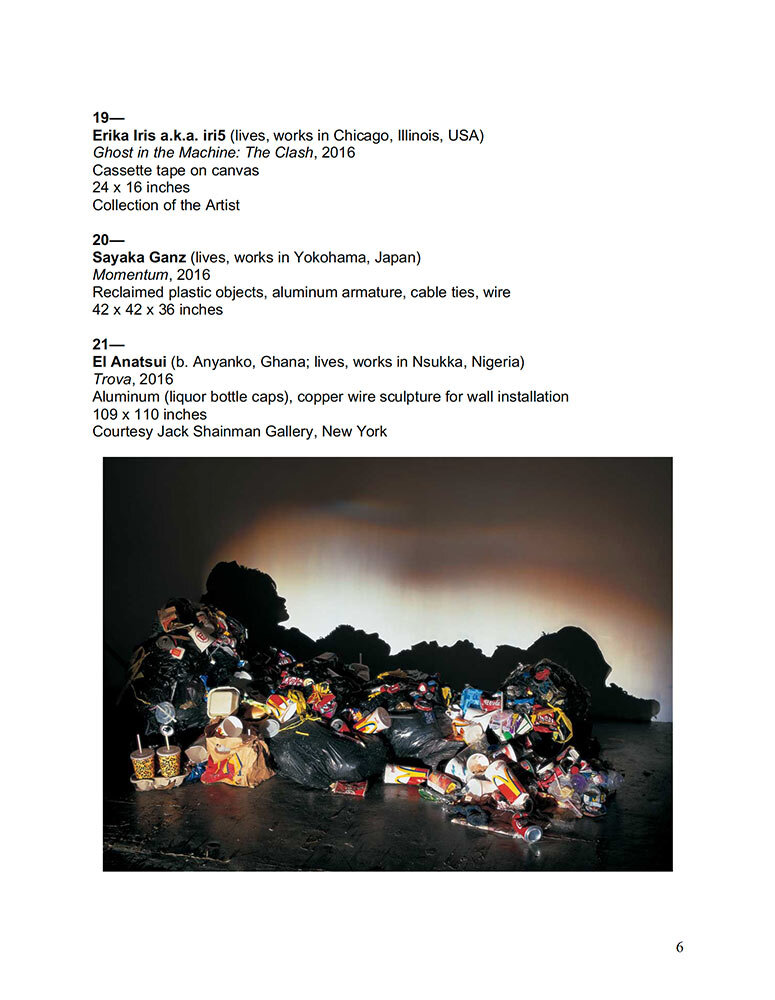
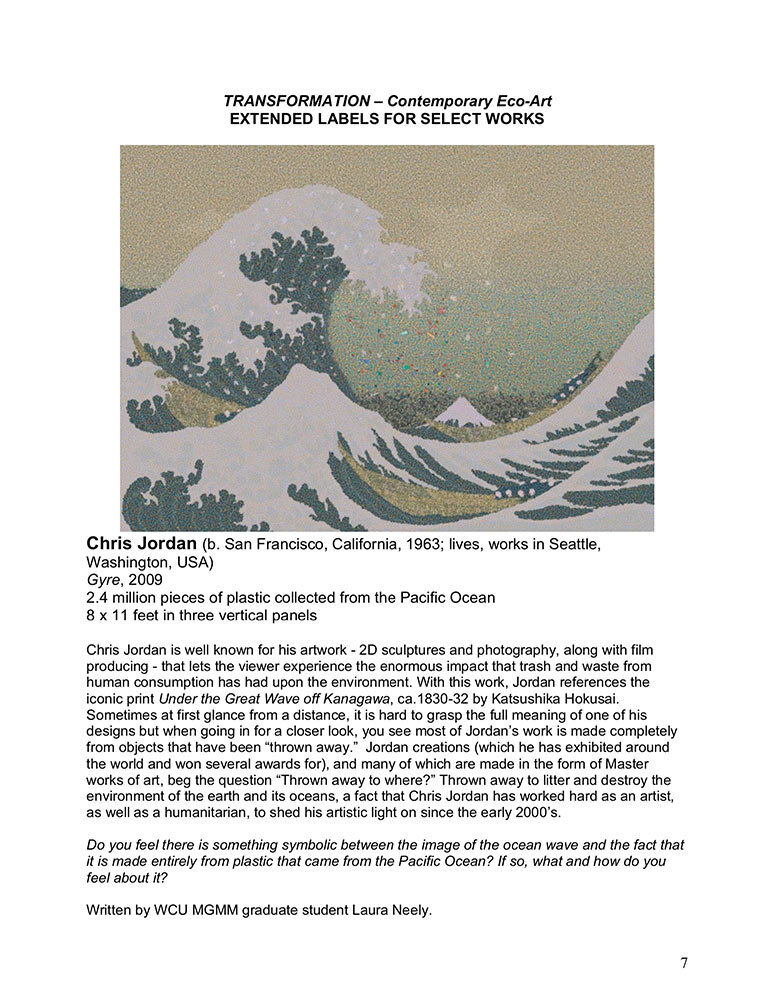
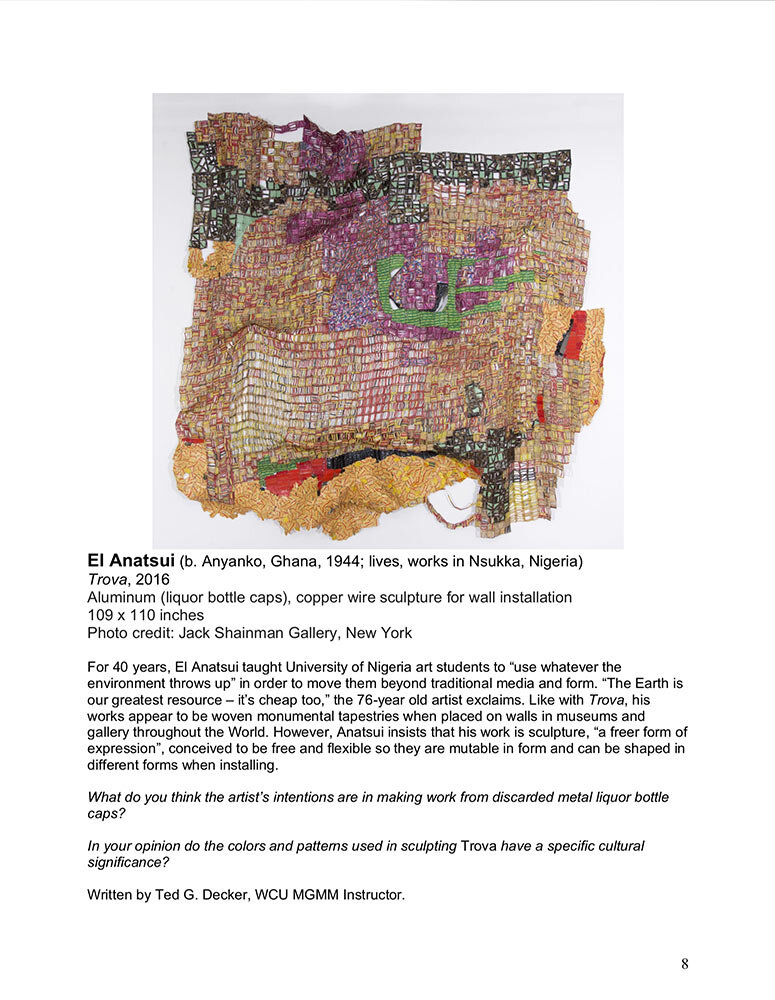
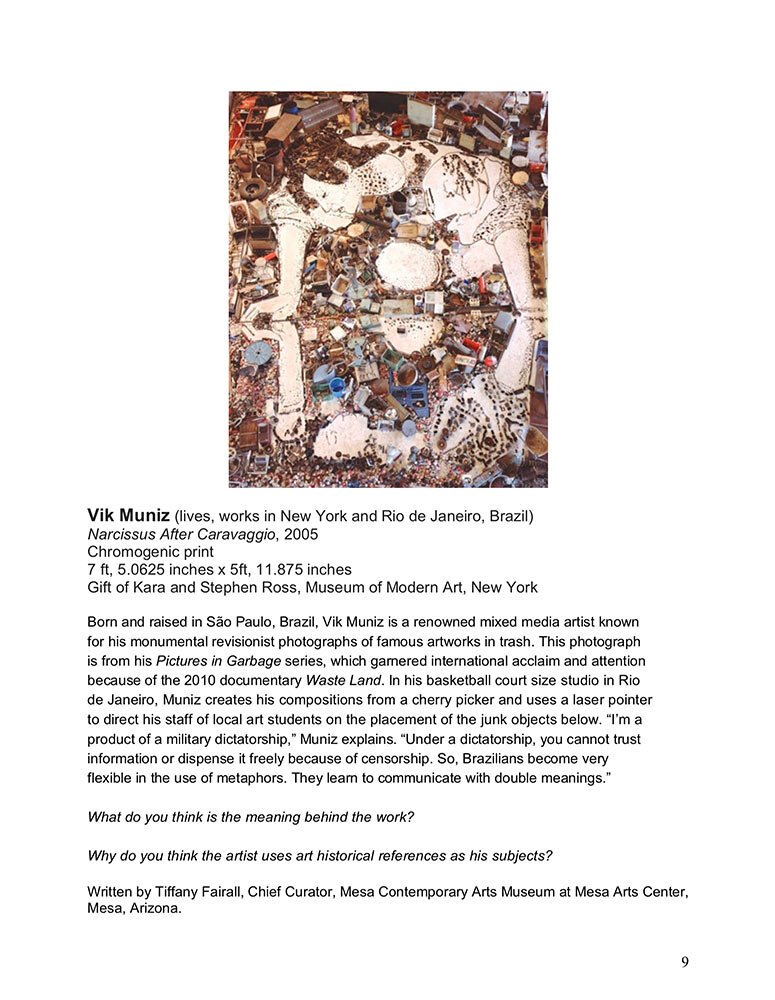

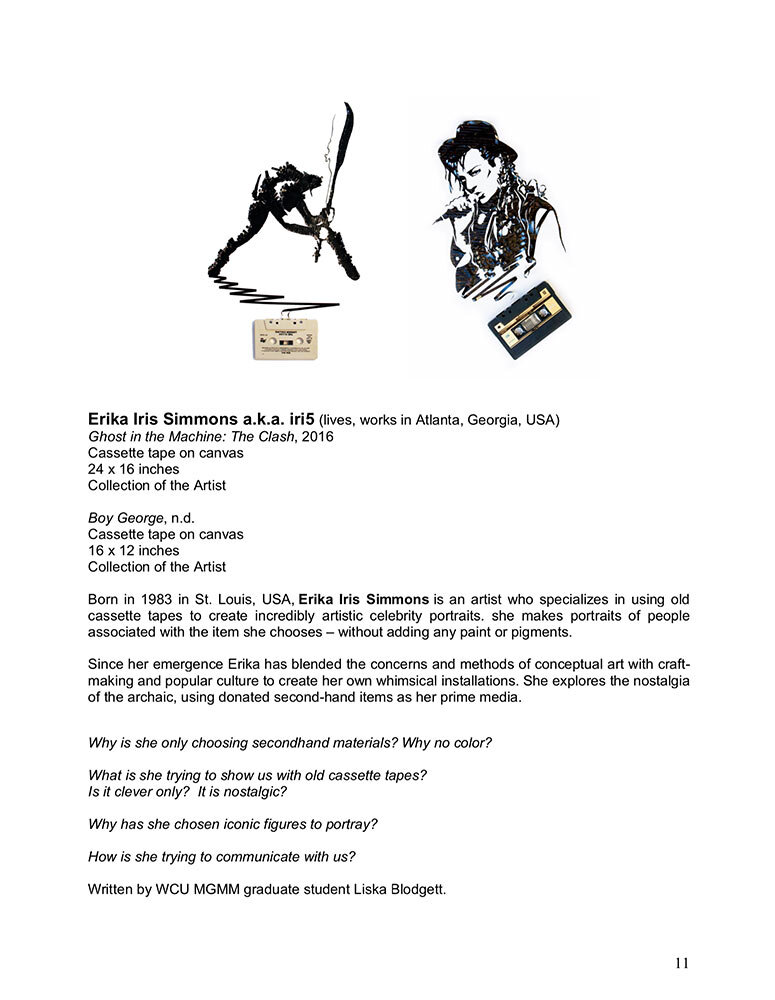
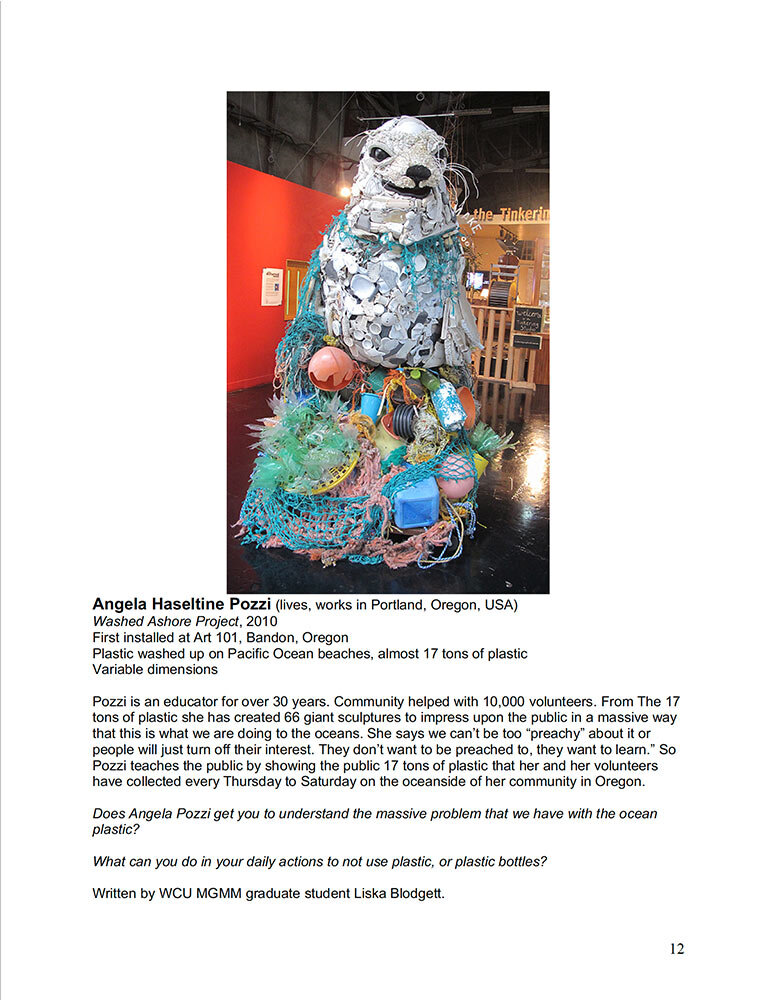
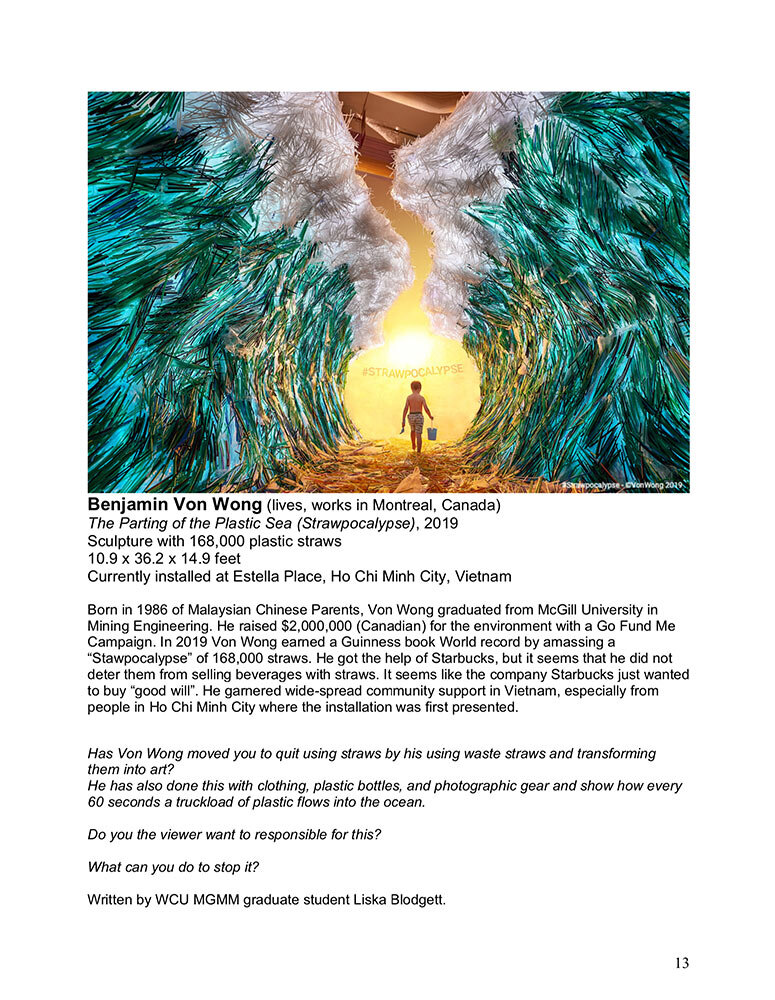

TRASHFORMATION: Contemporary Eco-Art
This exhibition focuses on visual production by artists who research, engage, and often intervene with the effects of overconsumption on our natural and built environments. Through globalization and technology, such as social media, we encounter works of art in a variety of forms, content, materials, and from different cultures that have transformed trash from this over consumption, creating a viable alternative to recycling. Artists from around the world explore and address these issues of excess, overindulgence, waste management, the reuse of materials and pollution.
What happens to recyclable items once they are picked up or dropped off at a recycling facility? What happens to all of our trash and where does it go besides landfills? An estimated 14 billion pounds of trash—mostly plastic—is dumped into the world’s oceans every year. According to The Ocean Cleanup, a project dedicated to ridding the ocean of trash, there are currently over 5 trillion pieces of plastic waste in the world’s oceans. On average, each American disposes of 5 pounds of trash per person per day into its landfills. Of the estimated 251 million tons of consumer sold waste generated each year in the U.S., approximately 32.5% of the trash is recycled or composted, 12.5% is burned and the remaining 55% is buried in landfills. Items can only be recycled if cleaned properly, labels removed, and objects placed in the correctly numbered bin, steps that are often missed by consumers and lead to contamination within the recycling facility and a higher percentage of materials that end up in the landfill.
The artists featured in this exhibition address the world’s ecological imbalance in their work by utilizing trash and reused items in an effort to help recycle and decrease the waste that different nations output. One way to combat the pollution produced by recycling plants, landfills, manufacturing facilities and consumer industries is to repurpose or reclaim these objects and materials through art. Presenting this work in a virtual exhibition format offers opportunities for viewer engagement, enjoyment, and for learning about social issues, cause and effects, and about contemporary art being produced in the world today outside the Gunnison Valley. The exhibition will be accompanied by educational programs designed to promote critical thinking, creative problem solving, and understanding about art and people who produce it.
This virtual exhibition was curated by master’s students in the Western Colorado University Spring 2020 Gallery and Museum Management 602 course. Support was provided by Professor Jeffrey Taylor with expert technical assistance and virtual gallery exhibition design provided by Jessie Miller Murphy, the manager of Quigley Hall Art Gallery.
The phICA Virtual Exhibitions Initiative is made possible through the generous support of:
Share Your Thoughts
Leave a comment below and share your thoughts about this virtual exhibition!





